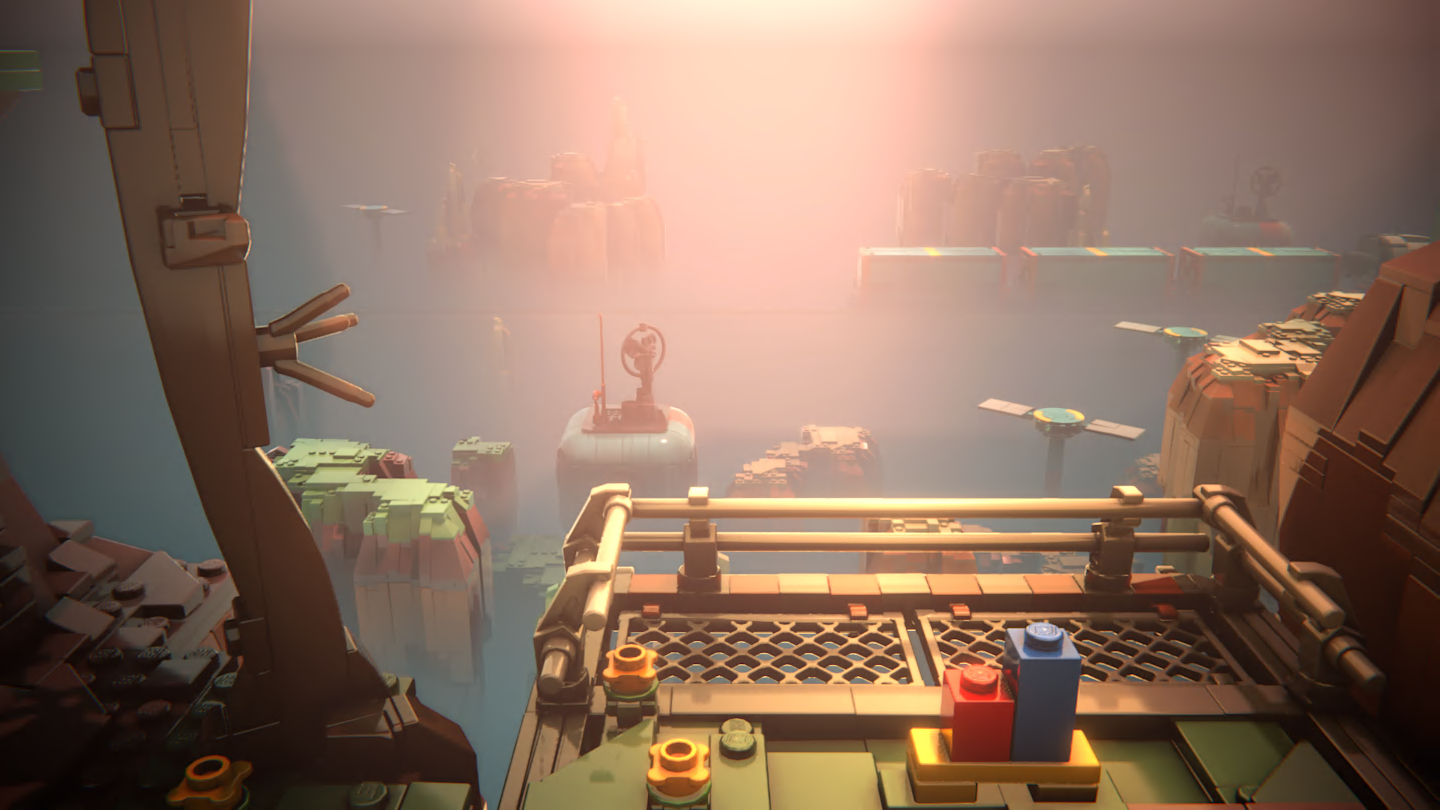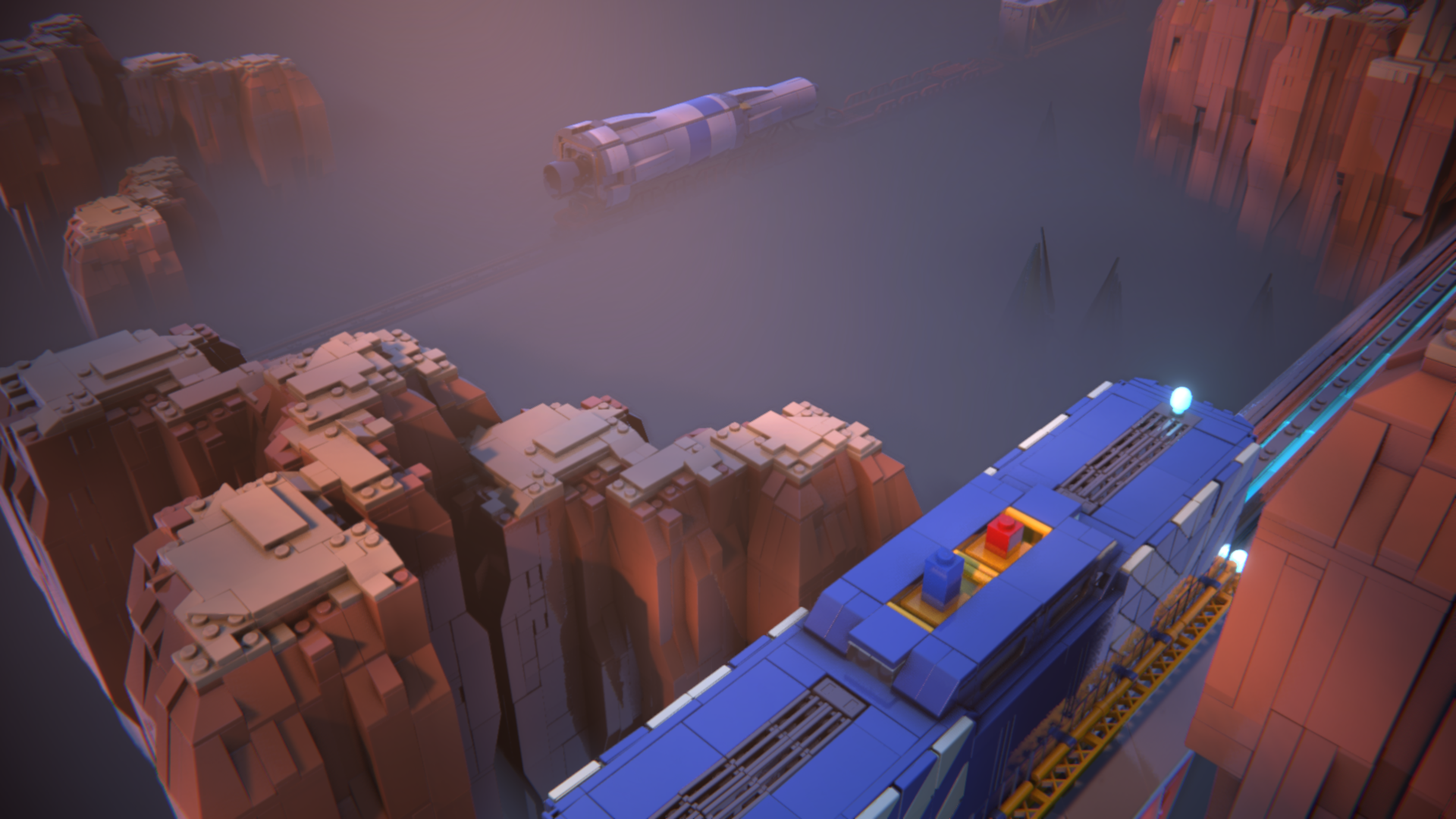
As a big Lego fan, I’ve noticed their games usually go one of two ways. They either recreate popular movies and stories with tons of action – think most of the Traveller’s Tales games – or they try something totally different, putting a unique Lego twist on how we usually play games, like with Lego Worlds or Lego Builder’s Journey. Honestly, it’s those more experimental games that really grab my attention, and I’m happy to say Lego Voyagers definitely falls into that category!
Voyager is a cooperative 3D puzzle game where you control two small Lego bricks on a quest to reach space. You’ll work together to collect bricks, build structures, and use various vehicles to overcome challenges. The game shines with its diverse puzzle designs, constantly introducing new ideas and mechanics to keep things fresh, although not every puzzle is perfectly executed.
The most annoying part of building is how the controls work. When using an Xbox controller, you press the ‘B’ button to attach to an object or brick, as long as it has a connection point. Once attached, you mostly just tumble around the world with it, which can be funny because of the game’s physics, even if the object isn’t shaped like a ball!
Placing blocks can be a bit tricky. You press B to align them to a grid, which helps with precise placement, but it can snap to nearby blocks instead. Even when it *looks* like a block is connected, you’ll find it isn’t until you press B *again* to fully secure it – otherwise, you’ll just fall off when you try to jump.

It seems minor, but even late in the game, players often struggle to remember how to properly place blocks. The game’s visuals create the illusion that blocks are connected, leading to frustrating mistakes when building structures like bridges and towers. While a dropped block quickly reappears, it still causes unnecessary hassle and slows down progress.
So, basically, the whole game revolves around building bridges and towers – that’s pretty much it. It doesn’t have a ton of different mechanics to play with. The puzzles aren’t about *how* you build things, but more about figuring out how to *get* the building blocks in the first place. There are some cool puzzles with magnets and balancing things on see-saws, but honestly, it doesn’t get super difficult. It’s fun, but not a huge brain-teaser.
The game isn’t inherently difficult – it’s clearly meant for kids. However, I wished there had been a bit more challenge overall. The one exception was a single, required minigame at the very end that was surprisingly hard compared to everything else. It felt like they went too far in making that one part difficult.
Because this game requires two players to cooperate, the puzzles are cleverly designed around teamwork. While some puzzles *could* be solved individually, the game frequently includes enjoyable sections where collaboration is essential, creating playful conversation – a key element that makes similar games like *It Takes Two* and *Split Fiction* so engaging.
The game really highlights its cooperative nature when one player gains a new ability mid-game, letting them solve puzzles the other can’t. While this feature wasn’t always used to its fullest, often resulting in one player being stuck doing simpler tasks, it did force communication and teamwork – which is the core appeal of games that require players to cooperate.

A great example of this frustrating but fun teamwork was a puzzle where we drove a car around a large area to collect bricks. One person controlled forward and backward movement, while the other steered left and right. The controls were awkward because the fixed camera made it hard to keep track of direction, but this actually made the experience memorable. My co-op partner and I spent the whole time playfully arguing and blaming each other for crashing, getting stuck, and generally driving like we were in a chaotic scene from an Austin Powers movie.
The game is visually charming and a joy to look at, especially because everything is built with Lego bricks – and it looks amazing in the Unreal Engine 5 with realistic lighting. Beyond the gameplay, it tells a heartwarming story about two Lego bricks dreaming of space travel, and even lets you customize your rocket’s design along the way.
Despite a few frustrating controls and puzzles that could have been more complex, I still had a lot of fun playing Lego Voyagers. It didn’t quite reach its full potential, but the puzzles are genuinely enjoyable, especially when playing with someone else. At just three hours long, it’s perfect for a relaxed and cozy evening with a partner or child.
More reviews on DBLTAP:
Read More
- Broadcom’s Quiet Challenge to Nvidia’s AI Empire
- Heights Capital Bets $16M on ImmunityBio: A Calculated Gamble?
- How to Do Sculptor Without a Future in KCD2 – Get 3 Sculptor’s Things
- Odyssey of Avalanche: DeFi’s New Darling, Zero Lockups! 🚀🎩
- Gold Rate Forecast
- METH PREDICTION. METH cryptocurrency
- UWM Shares Stir the Pot After CEO’s $6.9M Move
- Trump Ends Shutdown-And the Drama! 🎭💸 (Spoiler: No One Wins)
- How to rank up with Tuvalkane – Soulframe
- How Bank of America is Poised to Thrive in the Coming Years
2025-09-15 16:17